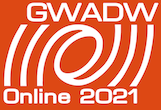Conveners
Quantum noise and optical configurations workshop: Hour 1
- Sebastian Steinlechner (Maastricht University & Nikhef)
- Martina De Laurentis (Istituto Nazionale di Fisica Nucleare)
Quantum noise and optical configurations workshop: Hour 2
- Martina De Laurentis (Istituto Nazionale di Fisica Nucleare)
- Sebastian Steinlechner (Maastricht University & Nikhef)
Quantum noise and optical configurations workshop: Hour 3-4
- Sebastian Steinlechner (Maastricht University & Nikhef)
- Martina De Laurentis (Istituto Nazionale di Fisica Nucleare)
The second-generation gravitational wave detectors are starting to be limited by quantum noise in the entire detection bandwidth. With the use of frequency independent squeezing, aLIGO and Advanced Virgo achieved a quantum noise reduction at high frequency while increasing it at low frequency. To avoid this issue, we can inject into the interferometer a squeezed state which rotates as a...
The injection of phase-squeezed vacuum states, in ground based gravitational wave detectors, already demonstrated its efficiency during the last observative run by reducing quantum noise of about 3 dB, above 100 Hz. At this stage, the consequent increase of quantum noise below this frequency, due to the anti-squeezed amplitude quadrature, did not affect the detector sensitivity, being this...
For broadband quantum noise reduction of gravitational-wave detectors, frequency-dependent squeezed vacuum states realized using a filter cavity is a mature technique and will be implemented in Advanced LIGO and Advanced Virgo from the fourth observing run. To obtain the benefit of frequency-dependent squeezing, length and alignment of the filter cavity with respect to squeezed vacuum states...
Squeezed light is critical in gravitational-wave detection for reaching sensitivities below the standard quantum limit. The success of future detectors will rely on achieving far greater squeezing levels, with an ultimate goal of 10 dB of quantum noise reduction. Even as squeezer technology matures, the internal losses of current detectors remain too large to support such high levels of...
In high frequency band, the quantum sensitivity is ultimately limited by the optical losses in signal recycling cavity (SRC). The sensitivity limit is independent of the arm length and the squeezing level, which constraints our ability to detect signals from binary neutron star mergers. By creating a cavity with two ETMs of the arm cavities, we can form a sloshing-Sagnac interferometer. It...
Back-scattered light results in parasitic modulations of the output light of gravitational-wave observatories. It constitutes a major noise source at low audio-band and sub-audio-band frequencies. Whereas gravitational-wave (GW) signals exclusively appear as amplitude modulations of the output light, modulations due to back-scattered light in general also have projections onto the phase...
White light signal enhancement using an optomechanical negative dispersion systems show promise to dramatically increase the sensitivity bandwidth of gravitational wave detectors. At the University of Western Australia three promising mechanical resonators are being designed and investigated. Demonstrated properties of a phononic metamaterial device have been shown in simulation to increase...
Broadband suppression of both shot noise and backaction noise in the GW interferometer can be achieved by adding an auxiliary table-top setup with a room temperature gas cell in magnetic field as the central element [1,2]. The basic idea is the measurement of motion beyond SQL using an atomic spin as a “negative mass oscillator”. The idea has been recently experimentally demonstrated for a...
We propose a new method beyond the standard quantum limit using an optical parametric amplification (OPA) in a signal recycling cavity (SRC) for the next generation gravitational-wave detector. This method has the advantage of improving the detection sensitivity in a high-frequency band. The OPA technique with a nonlinear crystal realizes a stiff optical spring without increasing the...
The levitated-sensor detector aims to look for gravitational waves (GW) in the frequency range from 10 kHz to 300 kHz. Since it is based on a resonant interaction between the GW and the levitated particle, it can have a significantly smaller footprint than the kilometer-scale detectors, inspring the first generation detector to be tabletop! I will explain the latest design modifications that...

